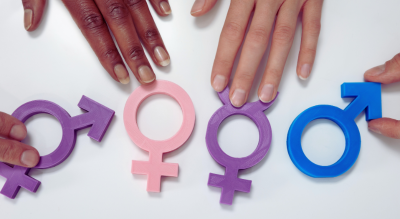Gender Identity Tests Are Gaining Popularity
The concept of "psychological sex" has a distinct meaning from "biological sex." Psychological sex, also known as "gender identity," refers to an individual's subjective sense of whether they are "male" or "female." However, when biological sex and perceived gender do not match, people can experience a sense of unease called "gender dysphoria." This persistent, negative anxiety is one of the reasons many transgender individuals undergo sex reassignment surgery.
The concept of "psychological sex" has a distinct meaning from "biological sex." Psychological sex, also known as "gender identity," refers to an individual's subjective sense of whether they are "male" or "female."
However, when biological sex and perceived gender do not match, people can experience a sense of unease called "gender dysphoria." This persistent, negative anxiety is one of the reasons many transgender individuals undergo sex reassignment surgery.
The Concept of Gender Identity
Gender identity refers to a person's deeply felt, personally experienced gender. It may be the same as their assigned sex at birth (cisgender) or different (transgender). Gender identity encompasses how one feels about and perceives their body (which, if voluntary, may involve altering their appearance or function through medication, surgery, or other means) and how they express or present their gender (including dress, speech, and behavior).

Conceptual Distinction
- Transgender
Gender identity is closely linked to transgenderism. Transgender is an umbrella term (an umbrella term is often formed by encompassing several terms) that refers to individuals or groups whose gender identity and/or gender expression differs from their assigned sex. Individuals within this umbrella term may identify with a range of related terms, such as transgender male, transgender female, cross-dressing, and non-binary. Assigned sex refers to the sex assigned or assigned to a person at birth. This assignment or designation is often reflected in the gender marker on birth certificates, identification documents, and other documents.
Male to Female (MtF) refers to transgender individuals whose assigned sex is male and whose gender identity is female. Female to Male (FtM) refers to transgender individuals whose assigned sex is female and whose gender identity is male. Transqueer refers to transgender individuals whose assigned sex is either male or female and whose gender identity is queer. Transgender individuals should be referred to by their chosen name, not the name assigned at birth, and should use pronouns that align with their gender identity. If you're unsure about which pronouns to use, ask the transgender person how they prefer to be addressed. Transgender people and cisgender people deserve the same respect and equal treatment.
- Sexual Orientation
Gender identity and sexual orientation are two completely different concepts. Gender identity is a person's internal sense of identity as male, female, or non-binary. Sexual orientation, on the other hand, encompasses a person's emotional and sexual attraction to another individual (whether of the same or different gender, or not limited to one gender). Both gender identity and sexual orientation can be influenced by social factors. Most people are raised as cisgender and heterosexual. For example, if a person is born with a penis, they are raised and taught to behave like boys in all aspects, including how to behave masculine and how to treat their future wife.
- Gender
Gender refers to the roles, behaviors, activities, attributes, and opportunities that society deems appropriate for girls and boys, men and women, and people with non-binary identities, as well as relationships between men, women, non-binary people, and people of different genders. Gender and gender identity are linked in that gender identity refers to an individual's deeply felt, experienced gender based on their experiences.
- Gender Expression
Gender identity and gender expression are closely related concepts, but the difference between them is that gender expression focuses on the outward expression of gender, rather than the inward perception, privacy, and intangibility of gender identity. Whether an individual's gender expression is consistent with their gender identity can only be determined when they publicly disclose their gender identity. According to the United Nations definition of gender expression, "a person's gender expression is not always related to their biological sex, gender identity, or sexual orientation." Gender expression is diverse and fluid; many people's gender expression aligns with societal expectations, while others do not. People whose gender expression does not conform to societal expectations, such as men perceived as "feminine" and women perceived as "masculine," are often subject to physical, sexual, and psychological violence, as well as bullying. People should not be bound by narrow gender expectations and should respect the gender expression of others. Wearing clothing or engaging in behaviors that are inconsistent with one's gender identity are both part of an individual's gender expression and do not affect their gender identity. ---Gender Dysphoria
Everyone has a gender identity. Some people experience discomfort or distress due to the inconsistency between their biological sex and their gender identity. This condition is called gender dysphoria, also known as gender dysphoria. Before 2013, gender dysphoria was included in the American Psychiatric Association's Diagnostic and Statistical Manual of Mental Disorders (DSM-5) as a mental illness known as "gender identity disorder." In 2013, the Diagnostic and Statistical Manual of Mental Disorders, Fifth Edition (DSM-5) revised this to gender dysphoria to better describe the experiences of children, youth, and adults experiencing this condition. This also helped remove the negative stigma associated with the term "gender identity disorder" for those with gender dysphoria.
